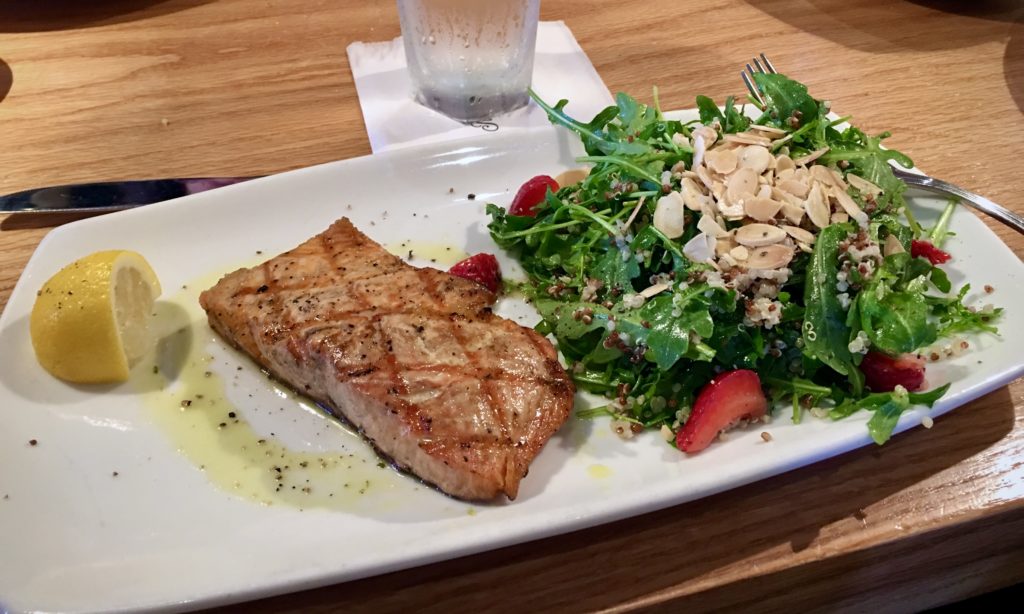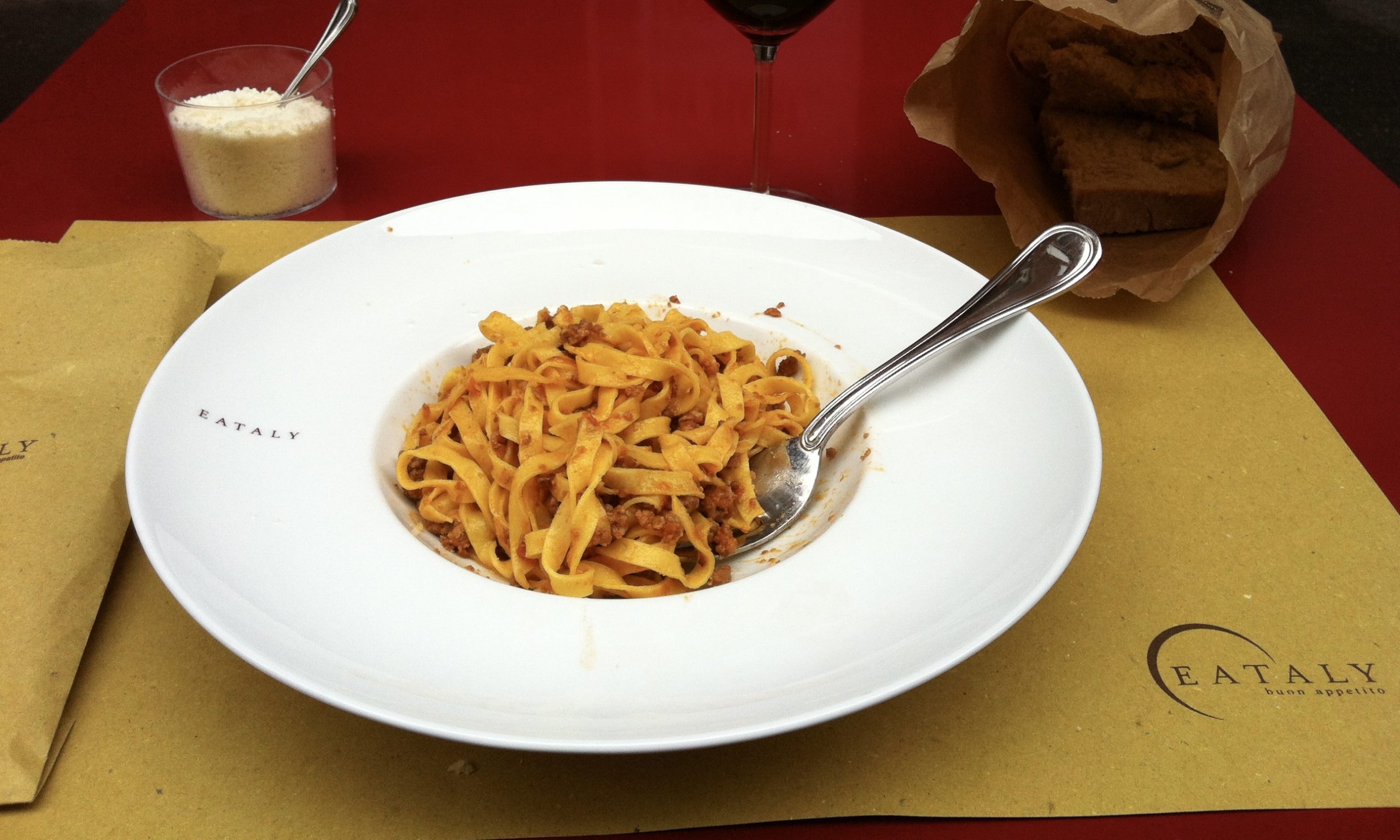Switching things up this month and moving away from the Asian culinary regions, I’m focusing on Italian food this month for the 12 months of cuisines challenge!
Italian food is very popular here in the US and yet… is not in my comfort zone. For one, I’m not a big noodle eater and pasta is pretty much the staple pantry item in Italian cuisine. Cheese (and dairy) is also the primary compliment and is also not friendly to my restricted diet.
I’m also not very well-versed in Italian food. The United States has a plethora of Italian restaurants and families with generational recipes, but the US also has it’s own take on what Italian food means (which I believe has to do with the earlier Italian immigrants and the needs and resources available to them when they arrived. Those staple dishes for those starting Italian-Americans were passed down and became what the US understands as Italian food today). It’s heavier, heartier, richer, and overall very delicious, but not what I found appealing about trying a month of Italian cooking. I want to focus on the REAL Italian food, which is to say, the food that Italians in Italy cook and eat, the foods associated with a “health Mediterranean Diet” and celebrate quality ingredients prepared simply. The food that’s meant to be eaten slowly while savoring each mindful bite.
Italians are passionate about their food and traditions around the food, so perhaps this month may end up being a bit sacrilegious since I won’t be cooking with any dairy (no butter, cream, milk, cheese, etc) or gluten (bread, pasta). Even with gluten free alternatives, I 100% plan to be using a lot of vegetables (zoodles anyone?) to replace at least a portion of the carbs to make it healthier for my body.
Benefits of Italian Month
1. Italian food is well known for being healthy
And Italians have a reputation of being skinny and healthy as well. There’s a practice of eating “only when hungry” and eating mindfully in Italian culture. Hopefully focusing on Italian food will be able to bring some of those good habits home.
2. There’s a high emphasis on vegetables and healthy fats
Italians don’t eat a lot of heavy meats, with the ones most commonly eaten being cured and sliced thinly to savor the flavor. Olive oil is the most common cooking fat used and fish (omega-3 rich fish like sardines) are common as well.
3. Italian food emphasizes fresh and high quality produce
Italians tend to use simpler cooking methods that focus on the flavor of the ingredients used. With the exception of long-stewing dishes, Italian recipes are fairly simple in their ingredients and preparation (which additionally makes quick cooking a possibility). If it’s not a good quality tomato, you can tell in Italian food. Therefore, being fresh and in season is important. This also means nutritionally, the food will be at its best.
4. Italian food is popular in the United States.
Even though the US has its own variant and its own take on Italian food, this does mean that the US regularly stocks a lot of the staple ingredients in Italian cuisine. And for those specialty items, it’s not difficult to find an Italian grocer around the states (imported cured meats are especially prized in a lot of charcuterie or “cold cuts” shops).
Additionally, because Italian food is so popular, there has been more progress in gluten free and dairy free alternatives to Italian staples than other cuisine categories. You can find a variety of pastas and brands that are gluten free (and that’s not including the naturally gluten free varieties from Asian countries like rice noodles (pho) and potato starch noodles (japchae)) and the cheese alternatives have grown to include a wide variety (though because many of them rely on coconut in the absence of dairy fat, I still can’t eat them).
Challenges
1. Italian food is high carb and relies on gluten
Pasta is like the rice of Italian cuisine. Outside of pasta, people eat a lot of bread. While there are gluten free options out there I can use as alternatives, it’s still a large carb load on my body. I’ll need to get creative to lessen the carb load and balance the overall meal plate. I see many zoodles in the upcoming month.
2. Dairy free cheese is not very good
While there has been many advances in the dairy free cheese alternative food manufacturing world, when comparing real cheese to fake cheese, it’s very easy to tell which is fake. Another down side is that most dairy free alternatives involve coconut, which is one of the food items I cannot have.
Cheese is the most difficult food category to get around. However… while replacing cheese on a cheese board or in a sandwich may be difficult, replacing “cheesiness” in a dish is actually pretty easy. Many foods that rely on cheese for its salty umami-ness (pasta carbonara, pesto, etc) can easily substitute nutritional yeast and salt. Some of the simplicity of Italian food I might have to skip because of its reliance on just sprinkling cheese on something, but I’m optimistic that I’ll find ways around this that won’t make me miss real cheese after all.
3. We’re in the wrong growing season
It’s March, which means it won’t be easy to find “local seasonal produce”, even in northern California where we tend to have milder weather. We’ll just have to focus on getting good quality and not letting it get too old in the fridge before eating.
4. I have a time conflicts now
This was a major issue last month during Korean Cuisine Month, but I started a new job in February and severely underestimated my time distribution between work life and side projects. Not that I dislike my job, but… the amount of time I have to write blog posts, research cooking culture, and formulate recipes has severely declined so I think I’m going to have to reduce the goal here. Hopefully, I’ll have at least 5 recipes to share by the end of the month.
I also have a backlog of Korean recipes I want to make sure I add. I will focus on keeping up to date with Italian month, but I might be sprinkling an old Korean recipe in every now and then.
And yes, pizza will definitely be one of the things I will be to making. Multiple versions hopefully. I know it’s not a “quick” option, but it is one of the foods I miss most when it comes to Italian.
Eating Out Italian
To be honest, I don’t do this much. It’s very difficult. Even if I find an Italian restaurant that openly offers gluten free pasta, the pasta might have corn flour or corn starch (it’s something I would have to ask the waiter to check… and I for some reason I’m very intimidated at the idea of walking into a proud authentic Italian restaurant and asking for food with no gluten, dairy, corn or coconut (I feel like they might get very judgmental and tell me “get out”)).
Pizzas are always a no. Even if a place offer gluten free crust, it will likely be heavily made with cheese (not sure why… I think it’s a texture thing) or include corn flour. I haven’t found a place that does otherwise, nor have I found a decent off-the-shelf gluten free pizza crust mix in grocery stores either.
If you find a restaurant that serves gluten free noodle options, then tomato-based sauces are you safest bet and you will ALWAYS want to ask to be sure (it’s surprising what sauces will have dairy in it (pesto, for instance, is green and made of basil, but it has parmesan!)). Even tomato sauces have versions with dairy (vodka sauce, being an example). If you want to include meat, don’t get the meatballs (meatballs are made with breadcrumbs and sometimes parmesan cheese). Opt for ground meat like a ragu (but again, ask to make sure there’s no gluten or dairy such as butter in the dish) or opt for a grilled portion of protein on the side (again, make sure there’s no butter used or corn starch to tenderize the protein).
Salads have been my default when I find myself at an Italian restaurant (which history has tended to be during a work lunch event). As long as it’s not a Caesar salad (which when you remove the dairy and gluten is just a pile of romaine lettuce (and funnily enough is not even Italian (it started in Tijuana, Mexico) but we have it in every Italian restaurant in the US)), you can normally just ask they remove the cheese (but do check that the dressing used is dairy- and corn-free since premixed vinaigrette can contain high fructose corn syrup or corn starch).

If there’s no salad option, and you are at more upscale Italian restaurant, check the “secondi” menu, which is usually where the heavier plates that feature whole chunks of grilled meat are. These tend to be more customizable for your diet (talk to the waiter!) but sometimes you’ll find items that already work, such as a roasted chicken plate.
But with Italian food, ALWAYS ask. Even if a dish you know is safe, that particular restaurant could have a restaurant-specific method of cooking it that includes your food sensitivities, like grilling your chicken with butter or adding cheese to the spinach. I once had a brick-oven roasted chicken make me sick b/c it was pre-tenderized with corn starch (I think. It’s a common method in restaurant cooking to keep partially-cooked chicken tender with quick-turnaround cooking, but I didn’t actually ask the chef. The waiters there were already super confused at “too many food omissions” request). Always ask.
Finally, Some Starter Ingredients
Italian food is about simple preparation and fresh quality ingredients, but they do have several key ingredients that are repeatedly used in their cuisine.
- Tomatoes – large, small, etc. They’re condensed into pastes, sliced and eaten raw, roasted, etc.
- Basil – fresh and dried, though fresh is significantly more fragrant.
- Olive oil – The main oil type used in Italian cuisine. Food is lightly sauteed in olive oil, braised in it, etc. Olive oil is even served as a dipping condiment with balsamic vinaigrette or dried herbs for bread.
- Garlic – The more the better.
- Lemons – Especially good when cooking fish, this fruit, like most citrus, keeps well in the fridge and has decent shelf life outside on the countertop. I love lemons and regularly keep a few around for desserts, drinks, soups, and seafood.
- Olives – Salty and briny, these give a burst of salty flavor when added to a dish. They can also be eaten on the side as a snack. There are many varieties of olives and olive color (black, brown, green…), but I personally always prefer the green ones. I recommend avoiding the canned black ones we see a lot in the US (the olives pick up the tin taste very strongly) and going for a jarred option. It’s more expensive, but if you’d never eaten the jarred kind, the flavor is like night and day
- Rosemary, thyme, oregano, marjoram, parsley – an assortment of herbs that are part of the Italian flavor palette. Many US homes will have these in a single jar mixed together in a store-bought “Italian Seasoning” blend, but I also recommend keeping the herbs separately too so you have better control of the flavor combinations. These are also great fresh, but unless you cook Italian regularly, keeping the herbs maintained in a household garden may be too much work. Dried has been fine for me (especially rosemary as the rosemary leaves are more hardy than the other herbs), but maybe this upcoming month will make me rethink that.

Leave a Reply